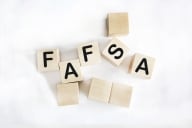You have /5 articles left.
Sign up for a free account or log in.
Most four-year colleges saw an increase in applications in 2010, and more colleges used waiting lists than they did the year before, with smaller proportions of students admitted off the waiting lists, according to a report released Wednesday by the National Association for College Admission Counseling.
Those trends will no doubt attract attention as they relate to the anxieties of many applicants and parents who aspire to attend highly competitive colleges. But NACAC’s annual report on the state of college admissions also found that most colleges admit most of those who apply.
The average selectivity rate (the percentage of applicants who are offered admission) at four-year colleges was 65.5 percent for fall 2010, down about one percentage point from the previous year. So all those reports about the few elite colleges with single-digit selectivity rates (while true) are about as unrepresentative as you could get.
Most of the trends in the NACAC report this year do not represent huge changes from previous years, but rather modest shifts, largely consistent with the expected strategies of both applicants and colleges -- all anxious over the impact of the economic downturn.
In terms of overall increases or decreases in number of applications colleges received, this year’s data are largely consistent with recent years -- with 73 percent of four-year colleges reporting that they received more applications, and only 19 percent reporting declines.
Some of the increases, however, are coming from students who are applying to large numbers of colleges -- and that group of applicants (who will not be able to enroll at more than one college, at least to start) complicate planning for many colleges.
Of fall 2010 freshmen, 25 percent had submitted seven or more applications. That figure is up from 23 percent one year earlier and 22 percent two years earlier. While some observers have assumed that the growing popularity of the Common Application is responsible for this increase, data from that organization suggest that those who use its system are not, in yearly averages, applying to more colleges. Currently, students at public high schools apply to an average of 4.24 colleges, while those at private, non-religious high schools apply to an average of 5.9 colleges -- and those averages have been stable in recent years.
Many college admissions directors have blamed those who apply to many colleges for the uncertainty about yield (the percentage of admitted applicants who enroll) and for motivating colleges to rely more on wait lists. These lists have become increasingly unpopular with high school counselors (not to mention applicants), who say colleges are leaving too many applicants in limbo, with little chance of being admitted.
The NACAC data show that a significant (but decreasing) proportion of those placed on wait lists are admitted. During the 2010 admissions cycle, 48 percent of colleges reported using wait lists, up from 39 percent the year before. Further, institutions admitted only 28 percent of those on wait lists, down from 34 percent the year before.
Other highlights of the survey:
- A shrinking share of colleges report increases in early decision applications (those for which applicants pledge to enroll if admitted) in 2010. The figure was 38 percent, down from roughly half of colleges in the previous three years.
- Admissions officers report that the top factors they consider in admissions decisions are (in order) grades in college preparatory courses, strength of the high school curriculum and standardized test scores.
- Private colleges staff their admissions offices much more generously than do public colleges, at least based on number of applications. At public institutions, the ratio of applicants to admissions officers is 981:1, but at private institutions, the ratio is 402:1.








